Art & Exhibitions
Anime, Graffiti, and a Pickled Shark: Here Are 7 Exhibitions That Defined the Y2K Era
These achingly cool shows captured a youth-obsessed zeitgeist.

These achingly cool shows captured a youth-obsessed zeitgeist.

Carlo McCormick

It is reasonable to expect that we may not remember the noughties with absolute clarity. We stumbled towards that historical horizon with a fin-de-siècle perversity made all the more dire by the rising superstitions of millennial dread. And then, with an offbeat chronological clockwork that belied the frenzy of Y2K, we hit the new century with a traumatic bang 20 months later, on September 11, 2001.
It all comes back to us when we listen to decade-defining greatest hits compilations heavy on Eminen, Coldplay, Pink, Linkin Park, Black Eyed Peas, and Britney Spears. Lets not forget the memes that remind us of the advent of social media. Isn’t the very nature of cultural memory defined by the fact that first-hand experience is never so comprehensible as when it is relived through nostalgia? When I was growing up, the joke was that if you could remember the sixties you weren’t there, but this seems to be a rule of thumb for every era. Actually living it is incidental and anecdotal to the fictions of recollection.
The promise of a new century is something between an extreme diet and a healthy amnesia. We can finally shed all those named decades and the burden of their associations to start anew with a clean slate. The expectation should be that it is shiny, young, and fresh, rather than dusty, old, and dull. We want novelty and, above all else, youth, so that’s what we’re celebrating here, the exhibitions from 2000 to 2010, which put youth culture and its unruly vernaculars above mid-career surveys and historical retrospectives.
Also, please note that to avoid the gratuitous hierarchy of listicles, this is an index of certain shows as they occurred chronologically rather than by degree of importance.
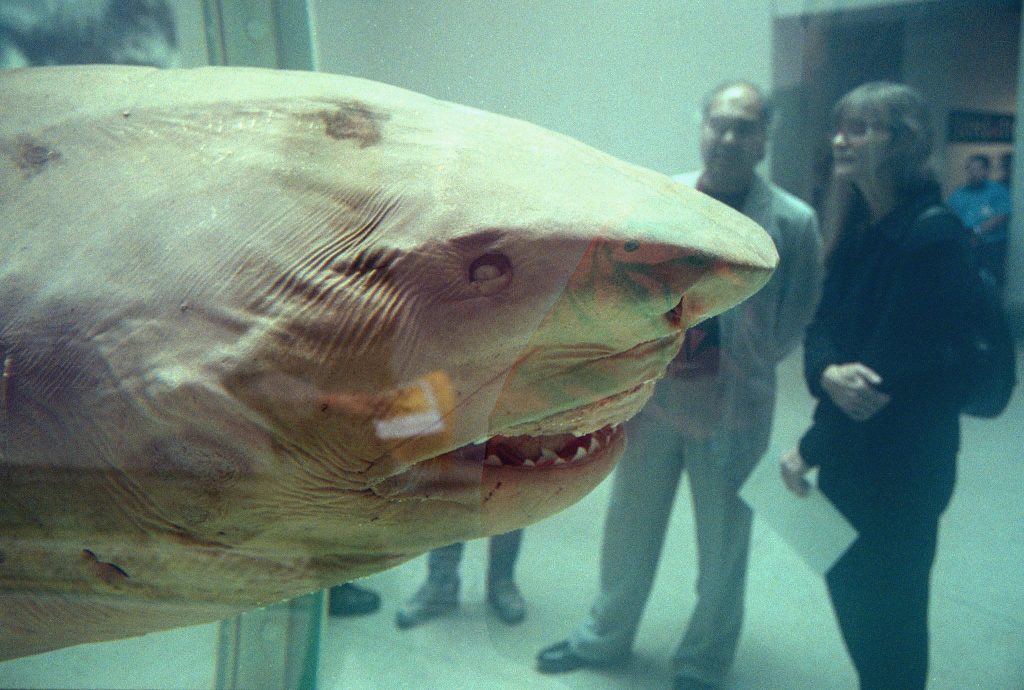
Visitors to the Brooklyn Museum of Art look at artist Damien Hirst’s The Physical Impossibility of Death in the Mind of Someone Living, part of the “Sensation” exhibition (1999). Photo: Doug Kanter/AFP via Getty Images
The best way to dive into the arbitrary framework of divvying up history according to the numbers of a Gregorian calendar is to cheat, so we’re starting with a show that was really a late ’90s exhibition in London because, well, it did run in New York through January 2000.
Like a grand debutante ball for a generation of YBAs (Young British Artists), this was a coming out like few others, the zeitgeist as organized and packaged by an English ad man. Of course it mattered that so many of its artists (including the Chapman Brothers, Tracey Emin, Damien Hirst, Sarah Lucas, Jenny Saville, Sam Taylor-Johnson and Rachel Whiteread) were brilliant, but it sure helped that they were as ambitious and crafty as the exhibition’s capitalist maestro, Charles Saatchi.
Somehow pulling off all the experimental, radical, and subversive genius of late 20th-century American art with impeccable English style, it felt like Brian Epstein and Malcolm McLaren had gotten together to launch another British Invasion, something we might have resented if it hadn’t been so damn smart and sexy.
Scandal and outrage—with a healthy dash of culture wars rhetoric—were a big part of the heady brew, as England got all Fleet Street over Marcus Harvey’s monumental portrait of serial killer Myra Hindley, and New York mayor Rudy Giuliani got his knickers in knots over Chris Ofili’s use of elephant dung in his representation of the Virgin Mary. He decried that “the city shouldn’t have to pay for this sick stuff,” before trying to pull the Brooklyn Museum’s funding and evict them from their century-old home. Funny how the media now frames Giuliani’s despicable behavior, pathological lies, and psychotic furies like some amazing fall from grace. Most New Yorkers have known he’s a deranged asshole for a long time.
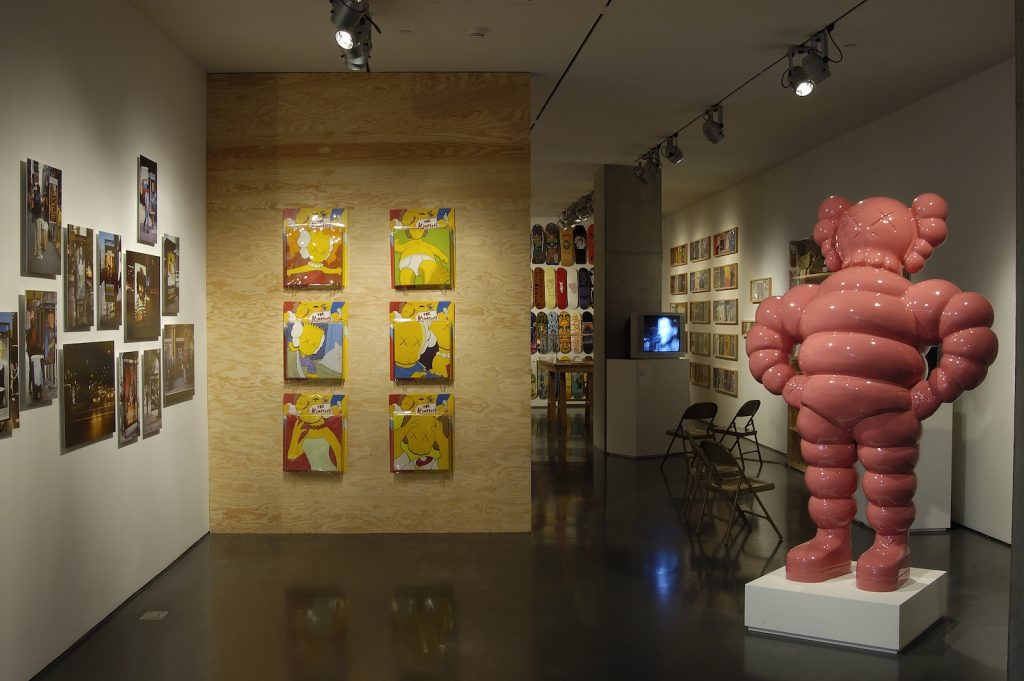
Installation view, “Beautiful Losers: Contemporary Art, Skateboarding and Street Culture” at Contemporary Arts Center, Cincinnati. Photo: Tony Walsh (2004). Image courtesy of the Contemporary Arts Center, Cincinnati, OH.
The first and still unmatched exhibition to chart the visual artists deeply associated with the subcultures of skateboarding, graffiti, punk, and hip hop, “Beautiful Losers” succeeded like none before, because it understood these are not opposing camps but realms of mutual influence and dynamic cross-pollination.
Taking its name from a 1966 novel by Leonard Cohen, and grounded with a pantheon of forbearers including Jean-Michel Basquiat, Larry Clark, Robert Crumb, Futura, Keith Haring, Raymond Pettibon, Pushead, C.R. Stecyk III, and Andy Warhol, “Beautiful Losers” helped launch and conceptualize a generation of artists who had fans long before they had collectors. Among them were Mark Gonzales, Kaws, Margaret Kilgallen, Barry McGee, Ryan McGinley, and so many others that are now simply legendary.
Born of alternate media sensibilities like zines, album covers, skateboard graphics, sketchbooks, and music videos, the cumulative effect was D.I.Y. multimedia, a tribal narrative of underground sensibilities so compelling one of the curators, Aaron Rose, made the show into a movie, and four of the artists—Harmony Korine, Mike Mills, Cheryl Dunn and Spike Jonze—would become far more celebrated as filmmakers.
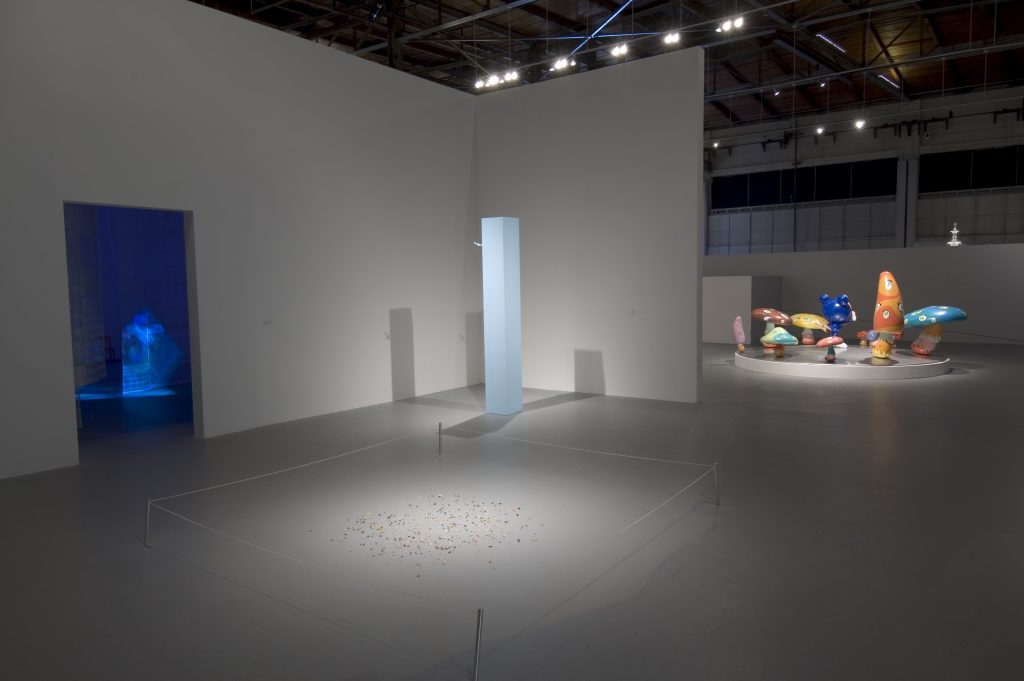
Installation view of Ecstasy: In and About Altered States, October 9, 2005 – February 20, 2006 at The Geffen Contemporary at MOCA. Courtesy of The Museum of Contemporary Art (MOCA). Photo by Brian Forrest.
When it comes to understanding culture, there is the question of how much contemporary creativity is about the fine art of intoxication. Does art look the way it does, or music sound a particular way, because artists get high? And do we seek out these expressions because we like feeling that way too?
A sensory gift from curator Paul Schimmel back when he had his MOCA mojo, “Ecstasy” was a universe of out of this world. This was eye-candy with selfie-magnets for communal ego deaths, like Carsten Holler’s “Upside Down Mushroom Room”, and a cast of blue chip art stars tripping the light fantastic. It was like the coolest chill out room in the most aesthetic rave, a full blast of mind-melting mayhem at a visionary velocity that would make Bernini dance in his grave.
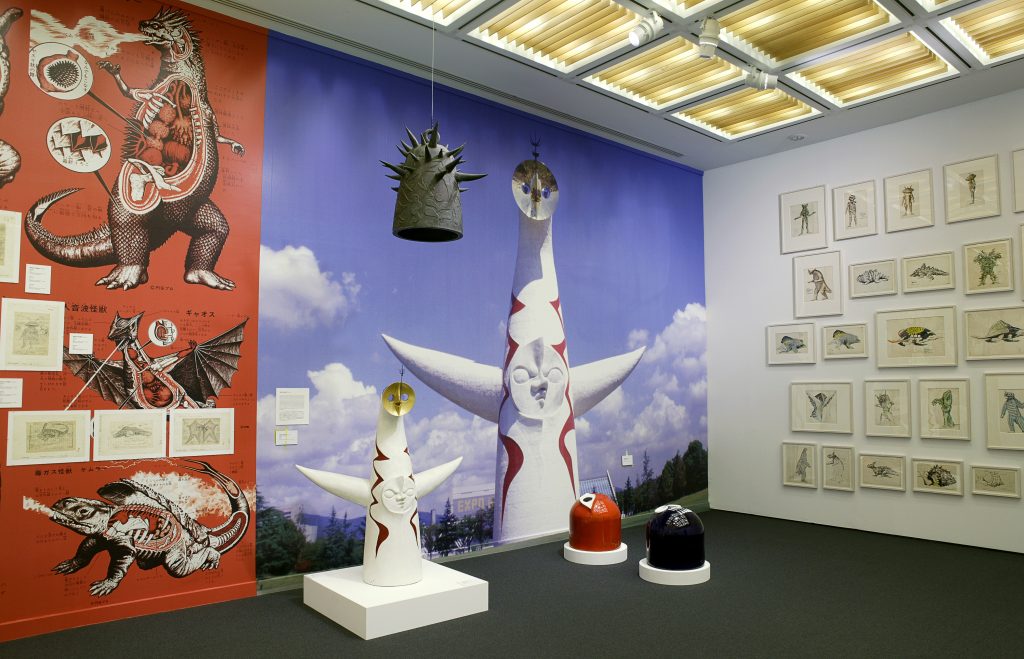
Installation shot, “Little Boy: The Arts of Japan’s Exploding Subculture”. Yuji Sakai, godzilla figures, various scales and dates.
Photo: Sheldan Collins. Courtesy the Japan Society.
The brilliant finale to Takeshi Murakami’s trilogy of shows on Japanese popular culture that began with “Superflat” in 2000, “Little Boy”—named after the type of atomic bomb that was dropped on Hiroshima—explored the gleeful infantilism of post-war Japanese art from the dark perspective of national trauma. Dizzying, delirious, and entertaining in ways that most fine art would never dare to be, “Little Boy” spun an alternative storyline, as conceptually acute as it was visually compelling. It spanned the legacy of Manga comics and Anime cartoons, the fetish of Godzilla toy figures, the rise of Otaku fan culture, the post-modern perversity of Kawaii’s super-cute, and the explosion of a hyperactive pop culture, as the frantic expressions of the psychic rupture wrought by the atomic age.
A stunning example of just how wildly inventive language gets when lost in translation, Japan’s embrace of western entertainment’s spectacle would indeed forever change our own amusements and obsessions. By looking back Murakami was prescient beyond measure, delivering an art house prequel to Barbenheimer with subversive subtitles.
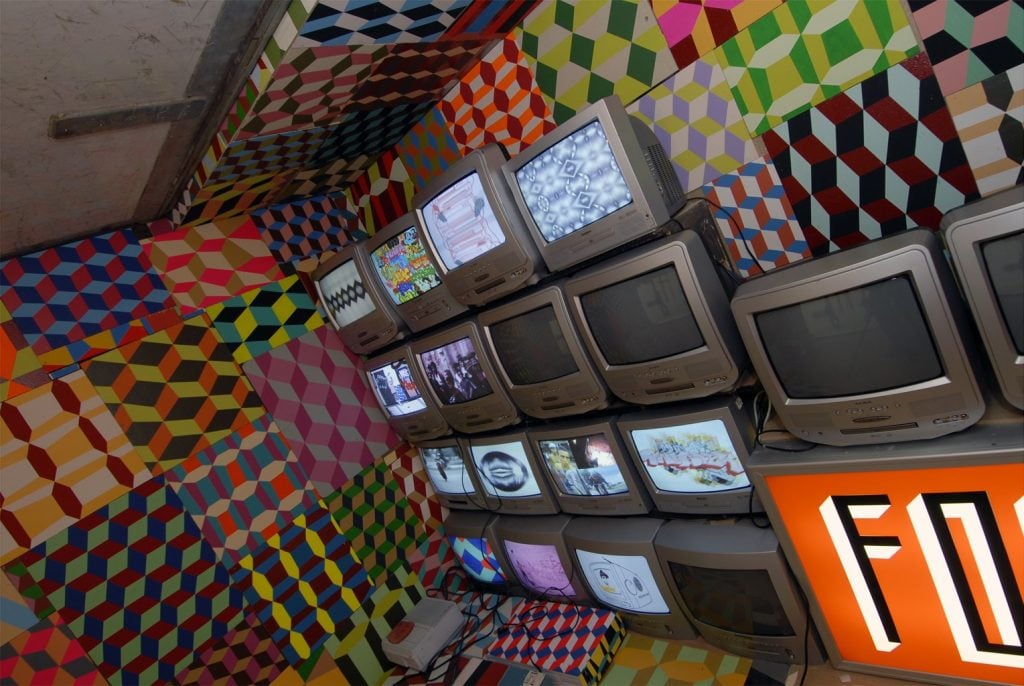
Installation view of work by Barry Mcgee in “Spank the Monkey” exhibition at Baltic Centre for Contemporary Art, Gateshead, (2006-7). Photo Colin Davison © the artist. Courtesy Baltic.
Probably the most important show no one has heard of, “Spank the Monkey” saw curator Pedro Alonzo catch the big wave of urban art long before it crested into an international phenomenon. He brought a wide range of practices into an unlikely but lively dialog, including those of Banksy, Dr Lakra, FAILE, Shepard Fairey, Invader, Barry McGee, Ryan McGinness, Os Gemeos, David Shrigley, Swoon and Ed Templeton. Sadly the museum—mistaking youth culture with juvenile humor—chose to name the show after the act of masturbation, so instead of heading these artists’ bios, it was dropped by all to spare cringe embarrassment.
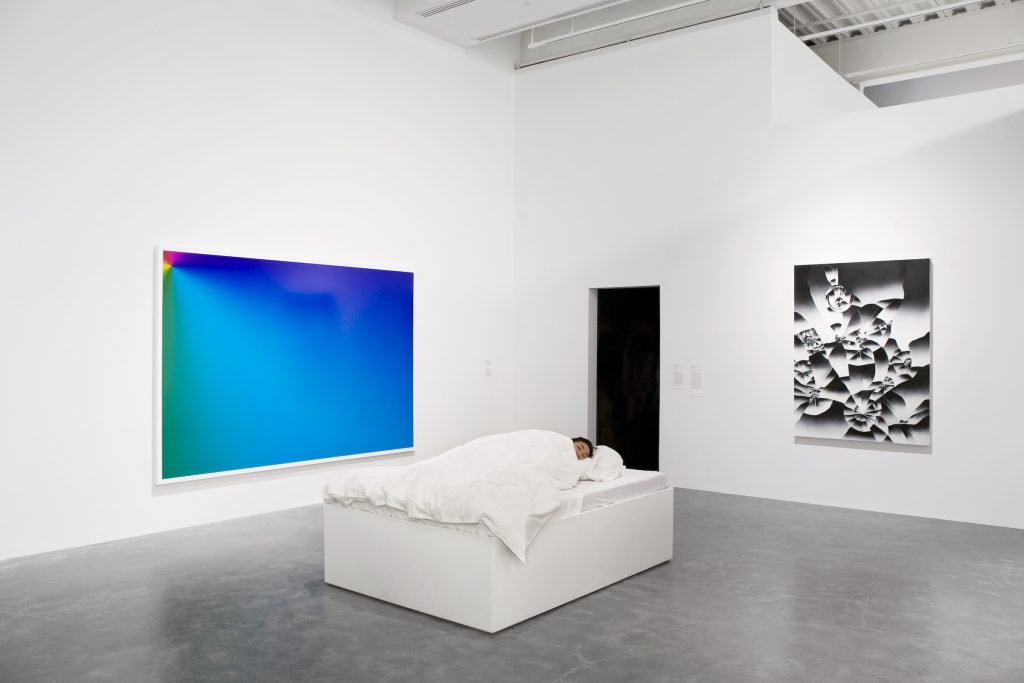
Installation view of “The Generational Triennial: Younger Than Jesus,” New Museum, New York (2009). Photo: Allison Brady
Billed as “The Generational” triennial, “Younger than Jesus” seemed so bold out the gate, limiting itself to artists under 33 years old, and making too evident how the art world’s vampire thirst for new blood lays in some shady ground between Peter Pan and pedophilia.
With a trio of sharp curators, Lauren Cornell, Massimiliano Gioni, and Laura Hoptman, which was somehow abetted by an open source network of 150 arts professionals the world over, this gathering of Gen Y Millennials (the kids of Baby Boomers, for those keeping track) was about as tepid as one might expect of consensus opinion, showcasing the process of collective ratification and ambitious professionalism more than the slippery moves of delinquent kids who ultimately do more to change the world than their disappointed parents will ever know.
Though the energy flagged as it inevitably does when adult squares try to dress up like cool kids, the endeavor was too savvy to fail, with some killer work by Cory Arcangel, LaToya Ruby Frazier, Josh Smith, Ryan Trecartin, and Adam Pendleton, back when they were fresh.
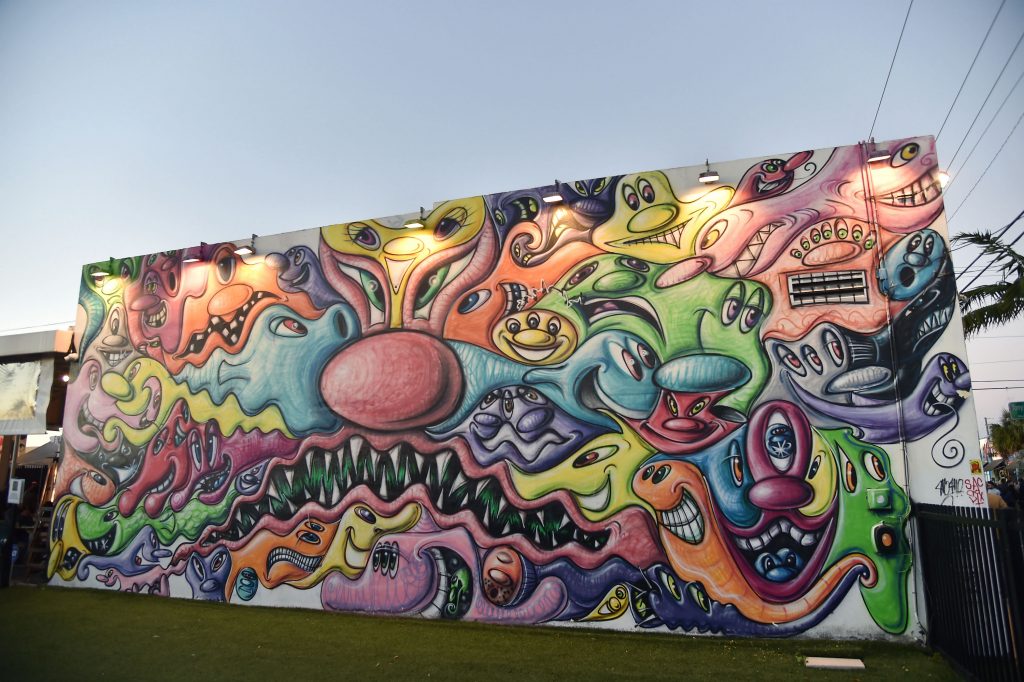
Wynwood Walls with Peter Tunney at Wynwood Walls on December 10, 2017 in Miami, featuring mural by Kenny Scharf. Photo: Patrick McMullan via Getty Images
For all the elite, rich power players in the art world, really visionary patrons like Tony Goldman don’t come along all that often. Starting out in the 1960s with his brother, renovating apartments on the Upper West Side, Tony fell in love with a neglected no-man’s land downtown called Soho, working as much as an historian preserving the flat-iron architecture as a developer, and learning that neighborhoods ultimately depend on culture and community far more than the wealthy cats who take them over.
He did the same for the art deco district of Miami Beach, and for his final act brought us to the nightmarish gentrification party zone we now know as the Wynwood district. For all his kindness in life, capitalist success will always leave a mixed legacy, and the once generous and freewheeling outdoor museum Goldman created is now a tourist clip joint with all the curatorial adventure of a marketing company, seeing which artists have the most likes on social media. But if you were lucky enough to be there when Tony opened it at the end of the decade with major murals by Futura, Os Gemeos, Kenny Scharf, Barry McGee, and Shepard Fairey, you will never forget the magic that can happen when the city dreams for all to see.